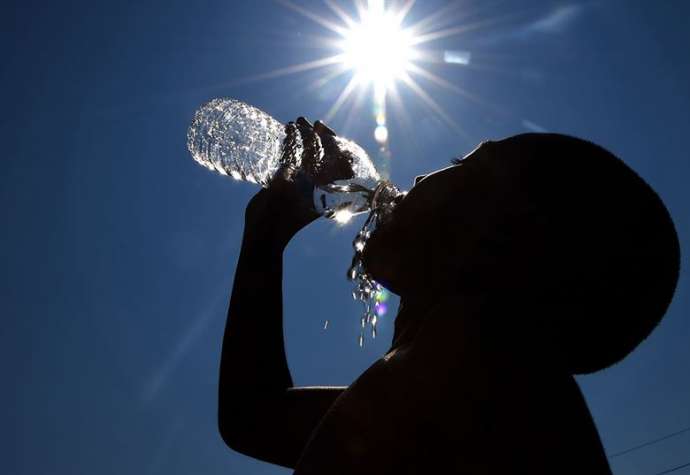STA, 27 July 2022 - A campaign has started to transport drinking water to the Slovenian coast, where restrictions have been introduced due to water shortages. The water is extracted from the Unica river, north of Postojna, and taken by trucks to a water works facility near Dekani. The project was launched at about the same time as the region finally got see some rainfall.
The water is being extracted as of Tuesday morning to water trucks of the Slovenian Armed Forces (SAF) and the firefighting service. It takes about two hours and a half for one such truck to take the water to the facility and return.
Five trucks have been secured by fire brigades, and four 10,000-litre tankers of the SAF, the authorities announced at a press conference at the site where the water is being extracted from the Unica, under the bridge in the village of Planina.
"Firefighters always want to help, even though we are looking back at a difficult week in Kras," said Franci Petek, the commander of the Firefighting Association of Slovenia, referring to the huge fire in western Slovenia that has recently been contained.
Darko But, the head of the Civil Protection and Disaster Relief Administration, added that the government had make it possible to hire private contractors with larger water trucks to help out in the effort.
But he noted that the extraction of the water by no means impacted the water supply for the nearby towns of Postojna and Pivka, while Martin Pregelj, the head of the the Rižana water utility noted that "it is a national project".
The measure to alleviate the water shortage in Slovenian Istria was confirmed by the government last Thursday, and will be in force until the end of August.
In the meantime, all restrictions remain in place. After the use of water for non-urgent purposes was banned and cuts for businesses was introduced, the total consumption decreased to 30,000 m3 a day, the local water utility said.
As the area has seen some rainfall in recent days, the utility has detected a slight rise in the level of the groundwater, but said it was not enough to revive the main natural spring of the Rižana river, which remains dry.
A total of 700 m3 of potable water was brought on Tuesday to the Cepki water works facility, and it has been estimated that under the current pace, the situation could be brought back to normal in ten days.
Some 20 litres of water per square metre fell on Tuesday in the nearby area of Brkini, and some of the water entered the Rižana system, while the water level in aquifers above the source of Rižana has also increased slightly.
While the main source is still dry, the Rižana flow at the downstream measuring point has increased to 115 litres per second, the water utility said, also noting that the consumption had also decreased compared to Monday figures.






